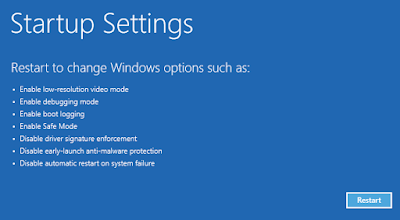Kipolam.exe
Possible Steps For Deleting Kipolam.exe from Windows 2000
Look at various different errors caused by Kipolam.exe 0x000000E4, 0x8024402B WU_E_PT_HTTP_STATUS_NOT_MAPPED The HTTP request could not be completed and the reason did not correspond to any of the WU_E_PT_HTTP_* error codes., Error 0x80072EE2, 0xf080B CBS_E_PROPERTY_NOT_AVAILABLE requested property is not supported, 0x00000071, 0xf0810 CBS_E_MANIFEST_VALIDATION_MISSING_REQUIRED_ATTRIBUTES required attributes are missing, 0x00000092, 0x80242000 WU_E_UH_REMOTEUNAVAILABLE A request for a remote update handler could not be completed because no remote process is available., 0x00000079, 0x80248013 WU_E_DS_DUPLICATEUPDATEID The server sent the same update to the client with two different revision IDs., 0x8024D00E WU_E_SETUP_REBOOTREQUIRED Windows Update Agent setup package requires a reboot to complete installation., 0x8024502D WU_E_PT_SAME_REDIR_ID Windows Update Agent failed to download a redirector cabinet file with a new redirectorId value from the server during the recovery., 0x80247001 WU_E_OL_INVALID_SCANFILE An operation could not be completed because the scan package was invalid.Easy Steps To Uninstall Kipolam.exe From Infected PC
Kipolam.exe is detected as a perilous PC threat which can harm your PC data and files very badly. It intrudes your PC silently and secretly so that you will not identify its presence easily and it can spread itself as much as possible. It can corrupt your data and make it inaccessible. Moreover, it can cause your PC to degrade its performance and applications to respond slowly.
You can infect your PC in many ways like when you open a spam email, visit some unknown and untrusted site, clicking malicious ads or pop-ups and many other ways. But one important method used by Kipolam.exe is bundling method in which it gets installed directly with the installation of free downloads. On its arrival into the system, it can almost disturbs the internal settings and functioning of the PC. Hence, if you find such malware into the PC, you need to Uninstall it.
Guide 1 : Efface Kipolam.exe From Chrome In PC
Guide 2 : Efface Kipolam.exe From Control Panel In PC
Guide 3 : Efface Kipolam.exe From Registry Entry In PC
Guide 4 : Efface Kipolam.exe From Task Manager In PC
Guide 5 : Guides To Start PC In Safe Mode
Effective Way To Effectively Uninstall Kipolam.exe From Your PC
Guide 1 : Efface Kipolam.exe From Chrome In PC
From Internet Explorer -
- Click on Gear icon to open Tools menu in the Internet Explorer window.
- Click on Manage Add-ons option.
- Goto Toolbars and Extensions tab.
- Locate Kipolam.exe related add-ons - > Disable button.
- Click More information button and finally click on Uninstall button to completely Uninstall Kipolam.exe.

From Google Chrome -
- At first, launch the Google Chrome browser.
- Click on gear icon present in your browser to open Chrome menu.
- Click on Tools option.
- Click on Extension.
- Select all unwanted extensions.
- Click on trash bin icon to Uninstall Kipolam.exe.

From Mozilla Firefox -
- Click on the Menu icon present at the top right corner of the browser.
- Select Add-ons option.
- In the Add-ons window, choose the Extensions or Appearance panel.
- Select add-on related to Kipolam.exe which you want to Uninstall.
- Click the Remove button.
- Click Restart if it asks.

From Microsoft Edge -
- Click on More (...) icon and click Settings then.

- Now, select A specific page or pages under the Open with option.
- Again, select Custom option.
- Type the URL of the page you want to set as your browser's default homepage.

Guide 2 : Efface Kipolam.exe From Control Panel In PC
For Windows XP
- Click on Start button and click Control Panel.

- Select Add or Remove Programs option.

- Find and Uninstall Kipolam.exe related programs in the window that appears.

For Windows 7
- Press Window key present on the keyboard.

- Click Control Panel option from the menu.

- A Control Panel window appears from where click on Programs option.

- Select executable file of Kipolam.exe.
- Click on Uninstall option.

For Windows 8
- Open run box by pressing Window+R keys together.

- Type control panel and hit Enter key.

- Click on Uninstall a Program.

- Then select all the programs related to Kipolam.exe.
- Click Uninstall option.

For Windows 10
- Click on Start button.
- Select Settings option present in the bottom left corner of the screen.

- Select System option under Setting.

- Click on App & Features option.

- Now, Uninstall all the unwanted program.

Guide 3 : Efface Kipolam.exe From Registry Entry In PC
- Press 'Windows+R' keys to open Run box.
- Type 'regedit' in the box and click OK button.

- Find out Uninstall all the registry files related to Kipolam.exe.
HKEY_LOCAL_MACHINEPCCurrentControlSetServicesWpm
HKEY_CURRENT_USERSoftwareMicrosoftInternet ExplorerMain “Default_Page_URL”
HKEY_LOCAL_Machine\Software\ClassesKipolam.exe
HKEY_CURRENT_USER\Software\Microsoft\Windows\CurrentVersion\Run “.exe”
HKCU\Software\Microsoft\Windows\CurrentVersion\Internet Settings\random
HKEY_LOCAL_MACHINE\SOFTWARE\Microsoft\Windows\CurrentVersion\run\random
HKEY_CURRENT_USER\Software\Microsoft\Windows\CurrentVersion\Internet Settings “CertificateRevocation” = ’0
Guide 4 : Efface Kipolam.exe From Task Manager In PC
- Press Alt + Ctrl + Delete keys altogether to open task manager.

- In the window, click on Process tab.
- Select the unwanted processes running.

- Click on End Process.
Guide 5 : Steps To Start PC In Safe Mode
In windows XP/Vista/7 -
- Click on Start icon.
- Place the mouse on Shutdown button and then click on Restart button.

- Keep pressing F8 button when the PC starts booting-up.
- Select 'Advance boot menu' present on the screen.

- Select 'Safe Mode With Networking' option and press Enter key.

In windows 8/10 -
- Click on Start button and press Shift key at the same time.

- Click on Restart button and click Troubleshoot option.

- Click on 'Advanced option' -> Startup Settings.

- Choose 'Enable Safe Mode' option from the given list and click on Restart.

- Press F5 button to choose 'Safe Mode With Networking' mode.


No comments:
Post a Comment